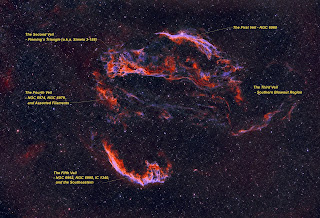I did a little star reduction but not too much as I like star fields. So this is my first image in a long while without the Hyperstar and I am pleased with the results. I plan to do more imaging of smaller FOV objects which is why I ordered the EdgeHD800 instead of the RASA in the first place. I did have a return of the ASI294MC and PI red splotches when using a NB filter issue but I was able to 'fix' it. I really like this camera but there is something with the sensor and Ha in particular. ZWO says the sensor passes all the tests and that the red splotches can be removed with calibration which they can. If you do get a color version of this camera, be aware of using it with Ha filters.
http://astroquest1.blogspot.com/
https://www.astrobin.com/users/kurtzepp/collections/
http://youtube.com/c/AstroQuest1
Camera: ZWO ASI294MC-Pro
Telescope: Celestron EdgeHD 800
Barlow: None
Focal Length: 2032mm (native)
F/10 (native)
Focal Reducer: Celestron .7 Reducer Lens
Mount: Orion Atlas Pro
Filter Adaptor: ZWO Filter Drawer
Filter: Baader IDAS NBZ (2-inch)
Focuser: ZWO EAF
Autoguiding: ASI120 Mini attached to an Orion ST80
Exposure: NBZ 75 x 180
Gain: 139
Offset 0
Temp: -10 C
Processing: Asiair app, PixInsight, Photoshop, Gradient Exterminator, Star Exterminator, Topaz DeNoiseAI.
https://www.instagram.com/astroquest1/
http://astroquest1.blogspot.com/
https://www.astrobin.com/users/kurtzepp/collections/
http://youtube.com/c/AstroQuest1




































